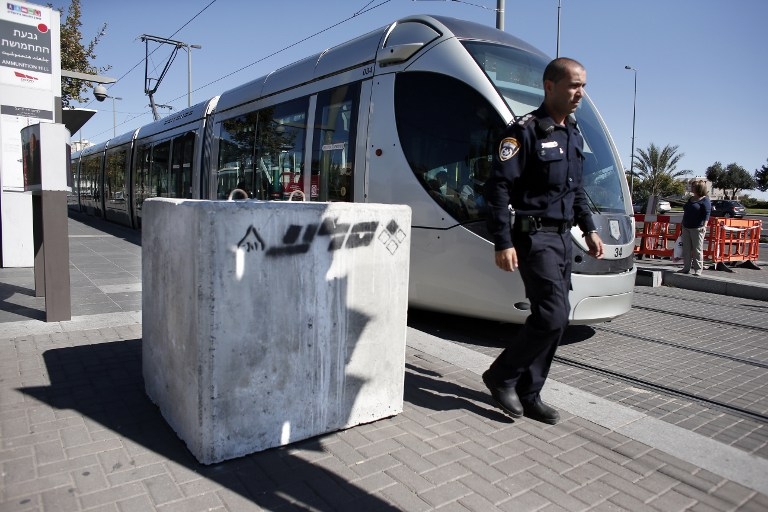'Car attack' in West Bank may have been an accident

After questioning the driver of a suspected car attack in the West Bank late Wednesday, Israeli security officials say the incident was an accident, according to news reports.
Three soldiers were wounded when a commercial van struck them in a junction near the Gush Etzion settlements just hours after a car attack in Jerusalem killed one and wounded 13 others.
Earlier on Thursday, two people linked to the accident were arrested by Israeli forces. One suspect turning himself in.
Late Wednesday, Israeli forces raided the home of driver Hammam Masalma in the southern West Bank town of Beit Awwa and arrested four of his relatives.
In the wake what had been widely reported earlier to be a car attack in Gush Etzion and an earlier attack on Wednesday in Jerusalem, right-wing Israeli groups are reportedly planning to march to the al-Aqsa Mosque in Jerusalem on Thursday.
Two car attacks in less than 24 hours
On Wednesday, after early morning clashes in and around the Aqsa compound that has been a flashpoint for recent rising tensions in the city, 38-year-old Ibrahim al-Akri drove a van into a crowd of people waiting at a bus stop in the Sheikh Jarrah neighbourhood that straddles East and West Jerusalem. Akri reportedly tried to flee the scene, but was swiftly shot dead. Thirteen people were injured in the attack and rushed to the hospital. By the afternoon, 38-year-old Israeli border policeman, Jidan Assad, was pronounced dead from injuries sustained in the attack.
Soon after the first attack, clashes broke out between Palestinians and Israeli security services at Qalandia checkpoint, in between Jerusalem and the West Bank, and also in the Shuafat neighbourhood where Akri is believed to have lived in a Palestinian refugee camp. Near the spot of the car attack, around 100 right-wing Israeli protesters took to the street to call for revenge, some carrying signs that said 'No Arabs - no terror attacks'.
The al-Aqsa compound has been at the heart of rising tensions in the city in the past week, starting with the attempted assassination of right-wing Israeli activist Yehuda Glick, a long time advocate for Jewish access to the holy site which the Jewish community call Temple Mount.
While access for Muslims to al-Aqsa is regularly restricted, particularly during times of political tensions, Glick frequently visited the compound with heavy security. He was leaving the Menachem Begin Heritage Center last Wednesday, where he had attended a conference about the Temple Mount, when he was shot allegedly by Mu'taz Hijazi, a 32-year-old Palestinian. Early the next morning, Israeli police shot Hijazi who was reportedly unarmed when they raided his home in the East Jerusalem neighbourhood of Abu Tor.
The al-Aqsa compound was closed for the first time in years the day after Glick's shooting this past Thursday which also saw clashes in the West Bank. Just before midnight that evening, and less than 24 hours after he was shot, Hijazi's funeral was held in Jerusalem's Old City. Israeli police had restricted the ceremony to 45 mourners, but hundreds of Palestinians turned out for the procession, climbing over barricades and gates to attend.
Israeli authorities reopened the Al-Aqsa on Friday following a day of violent clashes with Palestinian protesters, but barred male Muslim worshippers under 50 years old from entering the site. Over the past week, several Israeli politicians have visited the compound which has sparked tensions with Palestinian worshippers and caused repeated clashes.
Middle East Eye propose une couverture et une analyse indépendantes et incomparables du Moyen-Orient, de l’Afrique du Nord et d’autres régions du monde. Pour en savoir plus sur la reprise de ce contenu et les frais qui s’appliquent, veuillez remplir ce formulaire [en anglais]. Pour en savoir plus sur MEE, cliquez ici [en anglais].




